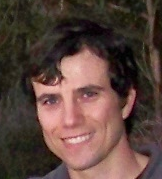Coherence (2025)
Parsons published his first book, the novel Coherence, on December 8, 2025 with EoR Publishing [4] . The book follows the protagonist Ruby, a graduate student in a Boston-area physics program, as she navigates a web of lies woven by humans and an artificially intelligent agent dubbed MiddleMan. As the lies compound, she is drawn into conflict with her advisor Mendel, her boyfriend Noah, and the exploitative systems surrounding her. Noah, as a co-developer of MiddleMan, struggles with the ethics of manipulating public perception to address climate change even as the project spirals in scope with unintended consequences for Ruby's personal life and civilization as a whole. The novel ends with a revelation that recasts the interpretation of many of the computer-styled, unattributed conversations in the book.
